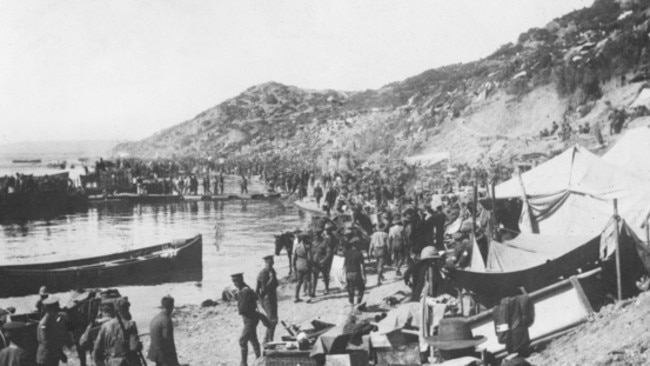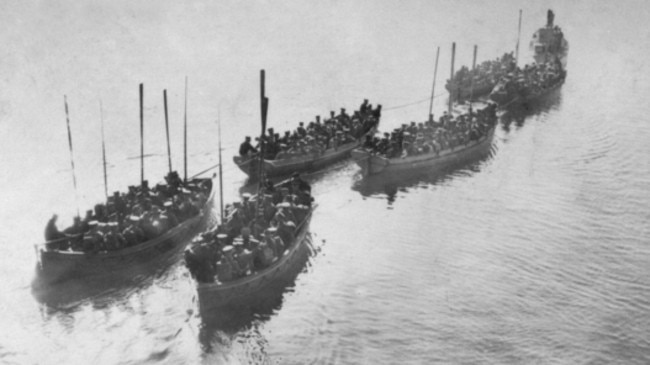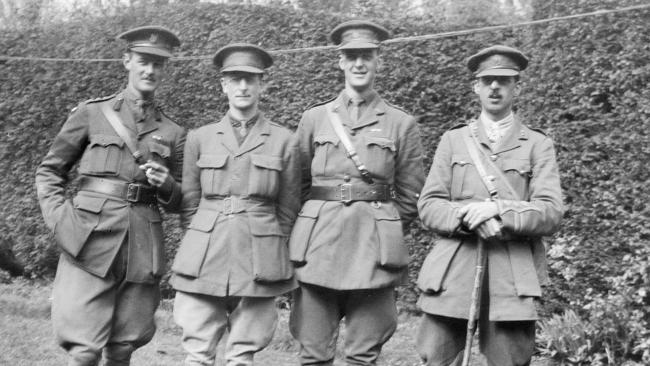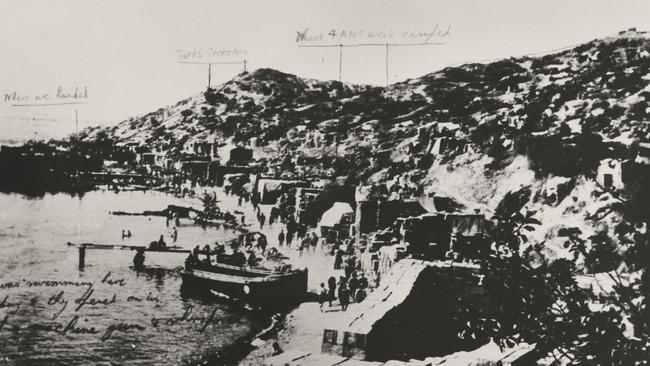Anzac phantom current: Gallipoli’s biggest myth exploded
THE theory that an ocean current pushed landing barges carrying the first Anzacs off course and onto the wrong beach has been slammed at a major conference.

ANZAC Centenary
Don't miss out on the headlines from ANZAC Centenary. Followed categories will be added to My News.
THE theory that an ocean current pushed landing barges carrying the first Anzacs off course and onto the wrong beach at Gallipoli on April 25, 1915 has been exploded as a myth at a major World War I conference.
According to former Navy officer, Bishop of the Defence Forces and historian Professor Tom Frame, incorrect charts, pitch darkness and incompetence by the top brass saw the troops landed at the unsuitable Ari Burnu (Anzac Cove) and not Gaba Tepe about 3km down the coast.

Ari Burnu was ringed by high ground and had a near complete lack of cover for invading forces.
Professor Frame said the myth about the current had been repeated so many times that it had become “fact” in some quarters.
“As the ANZAC experience was significantly shaped by the terrain at Air Burnu ... can I suggest that the naval mistake that led to them being there assumes considerable importance,” he said.

Navigational errors that placed the “guide ship” HMS Triumph in the wrong location 8km out at sea cost the Anzacs any hope of victory and sealed their fate from the first minutes of the eight-month campaign that claimed 8500 Australian lives including about 1000 on day one.
The phantom current conspiracy was born when General William Birdwood told WW1 historian Charles Bean that it was a surprise current that saw the troops put ashore in the wrong place.

Professor Frame said he had sat in a boat for hours on the 75th anniversary of the landings and had spoken to local fishermen and had found no evidence of any current. In fact he didn’t drift “an inch”.
“Blaming the current was so convenient.”
Professor Frame argued that General Birdwood and the top brass were simply covering up the fact that staff officers had not properly researched the landing place and were unaware that the charts were outdated and wrong and that navigation marks ashore would be invisible on a night with no moon.

When he was embarked on the frigate HMAS Sydney off Anzac Cove on April 24, 1990 Professor Frame had asked junior sailors where they would not like to go ashore they all pointed to Anzac Cove.
One of the world’s leading military historians Profesor Sir Hew Strachan, from Oxford University, told the three-day War Memorial Gallipoli conference that the roots of the disastrous campaign sprouted exactly 100 years ago, on March 18, 1915, when British and French battleships were sunk in the Dardanelles Straits as they attempted to run the Turkish blockade.

That push was also marked by incompetence and political impatience from Britain’s First Sea Lord Winston Churchill, who was desperate to get the Navy into the war.
It was the failure of the naval operation that led to the Gallipoli landings and the overland push to the Dardanelles.
“London would have been happy to get the Anzacs straight to France in 1915,” Professor Strachan said.
He said the Dardanelles campaign was not strongly supported by most of the British high command who refused to send the latest warships due to fears about the powerful German fleet.
Canadian historian Professor Christopher Bell said Churchill believed that there was little risk in his “best case scenarios” plan to push through the Dardanelles to Constantinople (Istanbul).

“If everything went according to plan one of Germany’s allies would be knocked out of the war, new states would flock to the allied cause and a cricital line of supply would be open to Russia through the Black Sea.
“Britain’s political leaders were dazzled. Churchill did his best to keep his political colleagues in the dark about the reservations that the admirals had.”
By the time Churchill’s grand plan was abandoned just four of 350 Turkish sea mines laid in 11 mine fields had been destroyed.
War Memorial chief Dr Brendan Nelson said he had first visited Gallipoli on Anzac Day in 2007 as Defence Minister, accompanied by two personal protection troops from the SAS.
The day before the cemeremony they stood on the beach at Anzac Cove.
“The SAS trooper immediately next to me said, ‘Sir you know what we are trained to do if someone had said to me we want you to get in a boat with 30 other men and in the darkness row here to this beach and get out with all our equipment and get up that terrain with the Turkish defence forces implaced as they were ... ’ he didn’t finish the sentence,” Dr Nelson said.
Originally published as Anzac phantom current: Gallipoli’s biggest myth exploded


